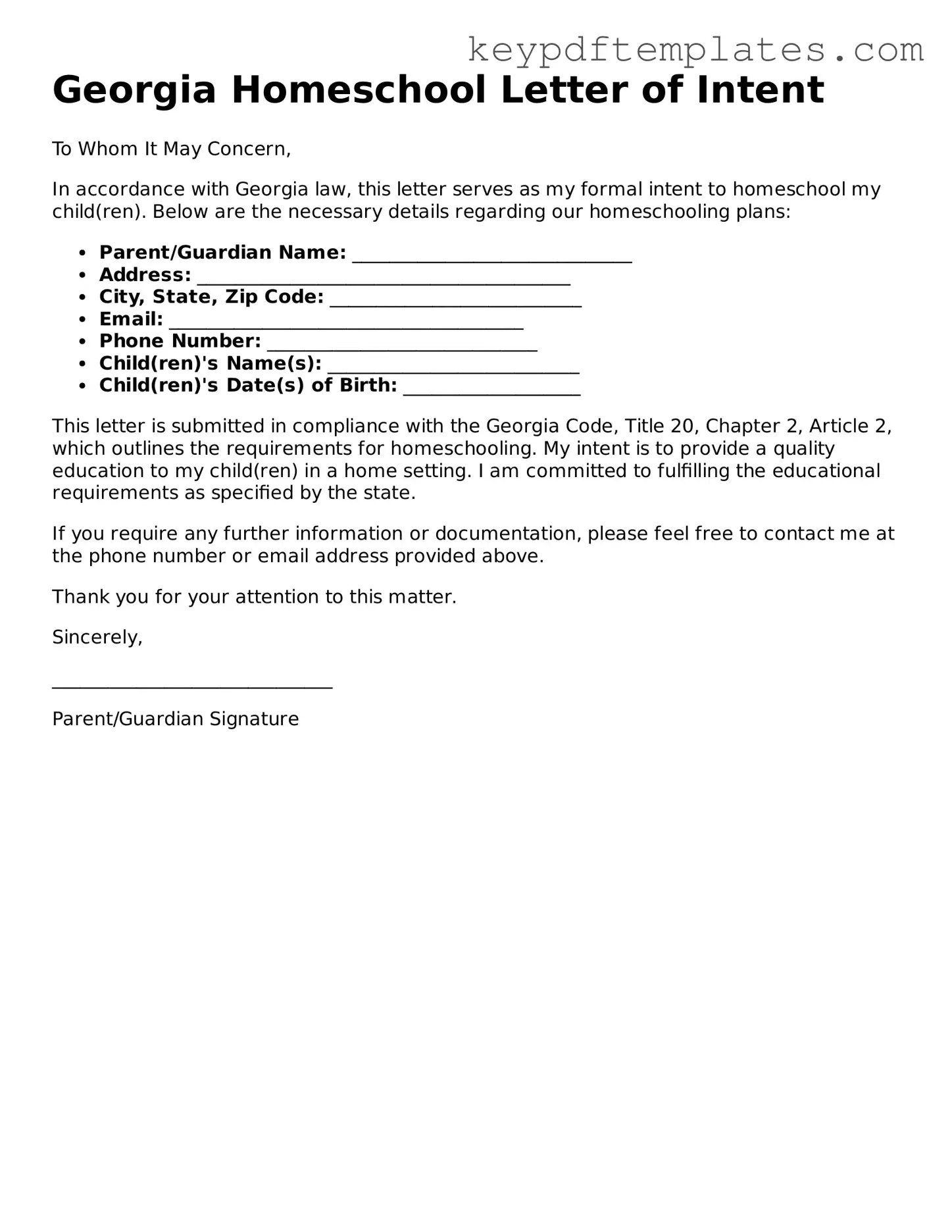Legal Homeschool Letter of Intent Document for the State of Georgia
The Georgia Homeschool Letter of Intent form is a crucial document for families choosing to educate their children at home. This form serves as an official notification to the state that parents are opting for homeschooling, outlining their commitment to provide a structured educational environment. Understanding how to properly complete and submit this form is essential for compliance with state regulations and to ensure a smooth homeschooling experience.
Modify Document Online
